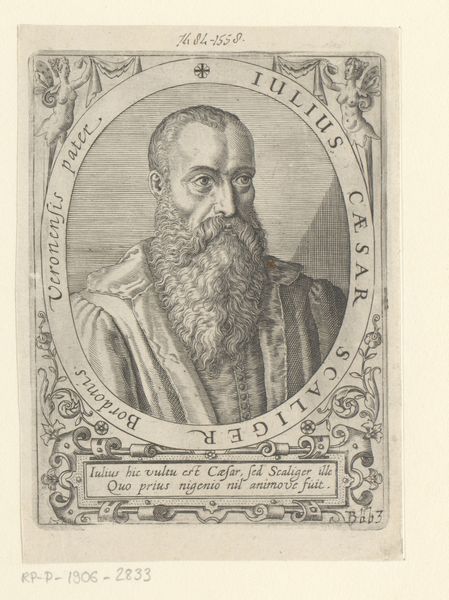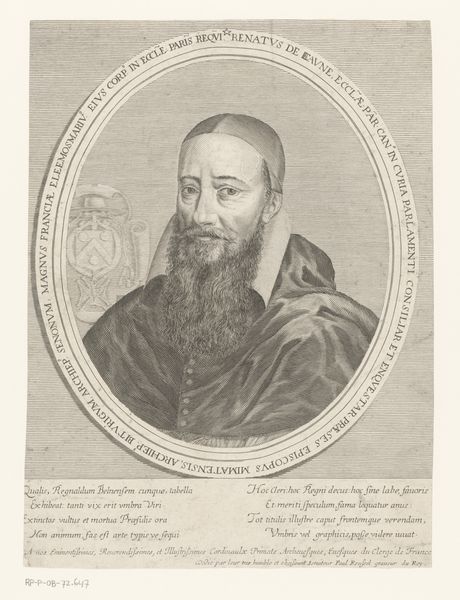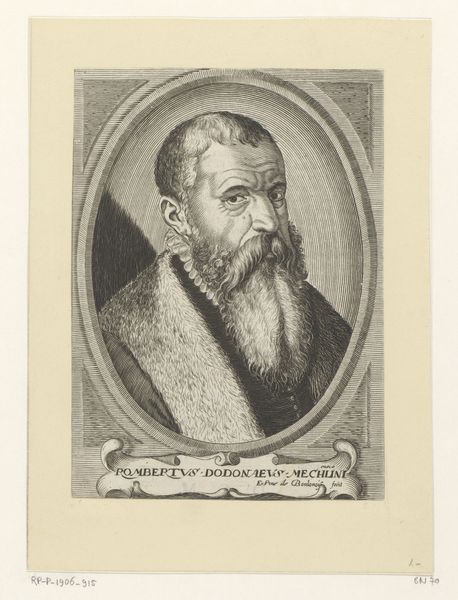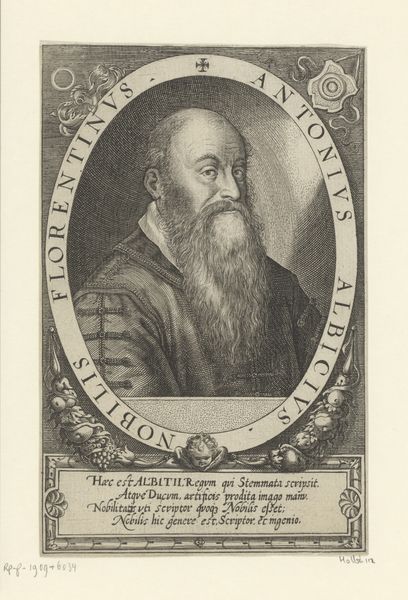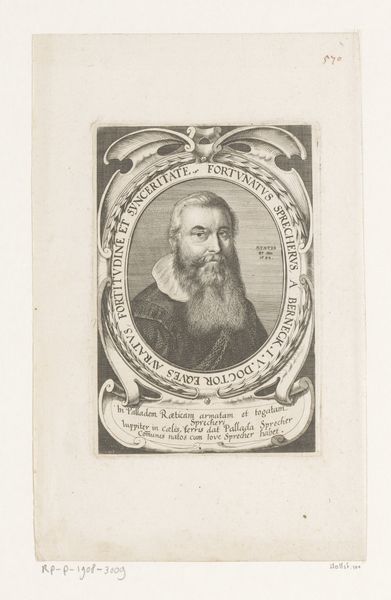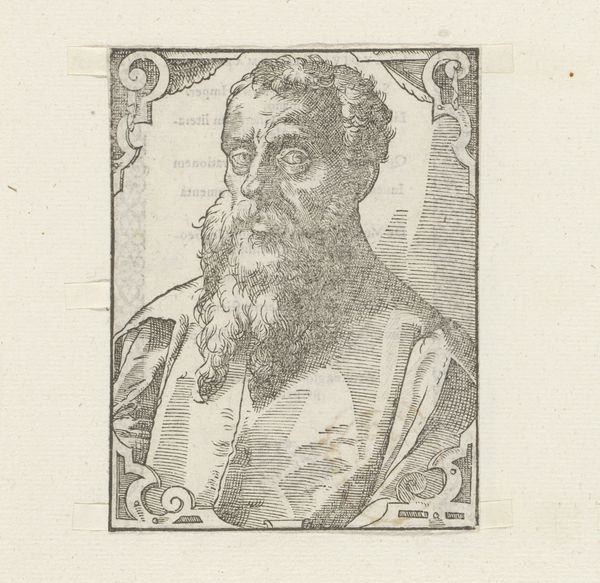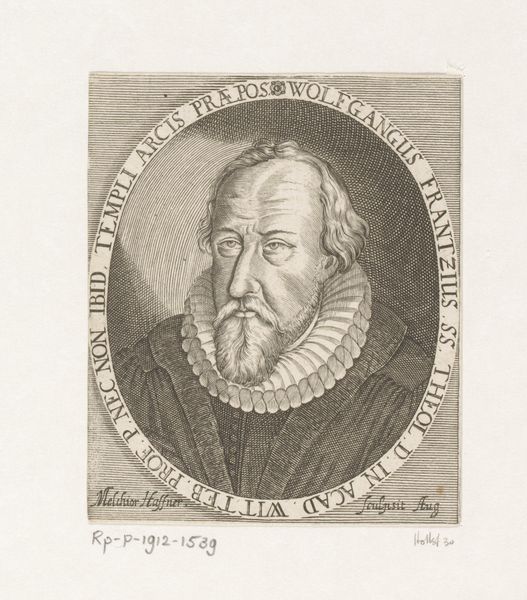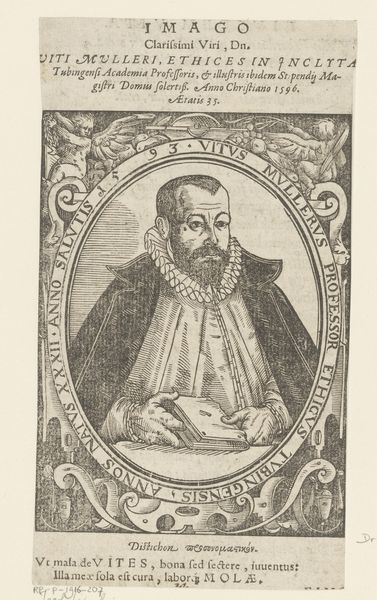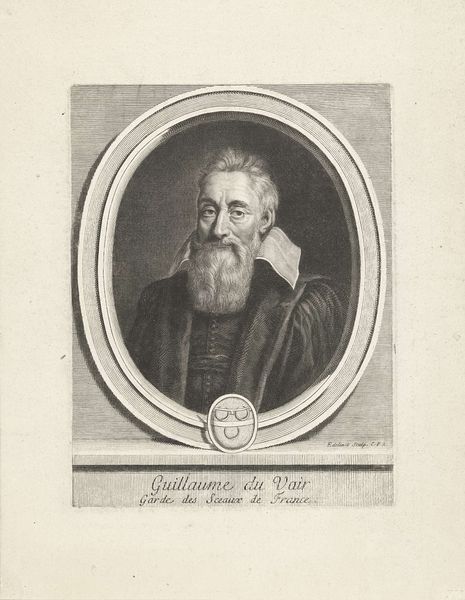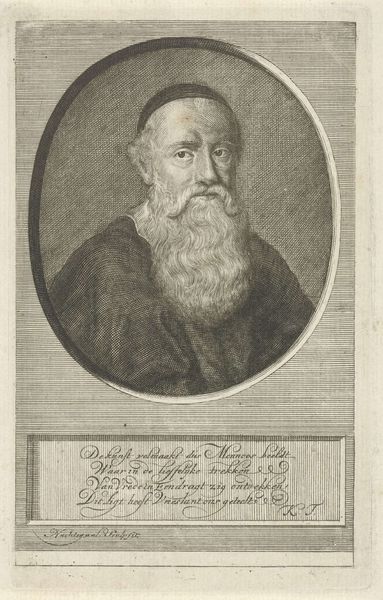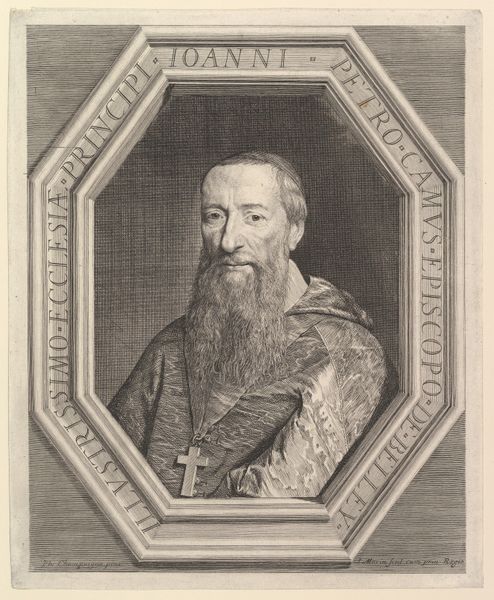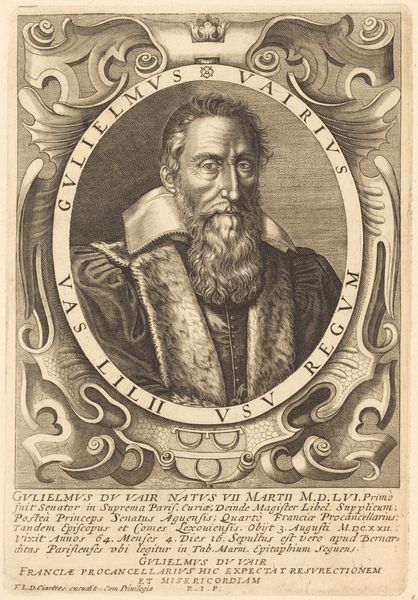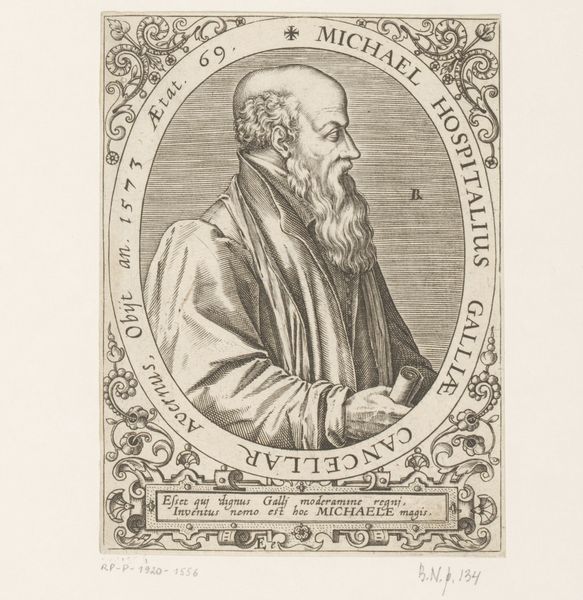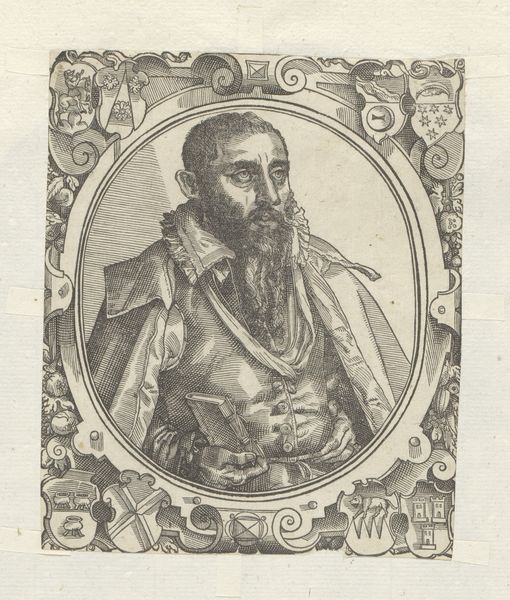
Dimensions: height 97 mm, width 99 mm
Copyright: Rijks Museum: Open Domain
Curator: Looking at this engraving, one gets a sense of immense gravity, doesn't one? It’s from between 1768 and 1775 and purports to be a "Portret van Pieter Brueghel (I)," though of course created long after the artist’s death by Johann Georg Waldreich. Editor: Yes, it’s… stoic. Perhaps even a bit mournful? I can't help but wonder how it participates in the construction of a historical artistic legacy, particularly given the gap between Brueghel's life and this portrayal. The politics of image-making are always at play here. Curator: Absolutely. Consider the artistic lineage being deliberately evoked. This image functions as a symbolic bridge across time, aiming to capture Brueghel’s essence but filtered through a later era's visual language and its own concerns about artistic genius. That dense beard, for instance, becomes an icon of wisdom. Editor: The beard definitely performs as a symbol of authority, doesn't it? But looking closer, I question whose authority? Waldreich, as a reproducer? Or, perhaps more complexly, a romanticized view of artistic labor and its ties to masculinity and historical narrative within 18th century social structures? Is it simply reinforcing stereotypes, or is it subverting them? Curator: I think it’s more of the former. There's a veneration here, an attempt to fix an image in cultural memory, but certainly with its own biases. The engraver chose to portray Brueghel with such detail, so clearly influenced by the artistic currents of his time; you can see subtle influences from the Baroque in the rendering of light. Editor: I agree on the fixity, but I want to suggest fixity is never still. What does this Brueghel signify for us today, viewing it from a different epoch of reproduced imagery and cultural assumptions? Is it possible to reclaim such representations from the weight of historical interpretation? Curator: I think acknowledging those biases and tracing their origins is vital. It lets us understand how historical figures are molded to fit ideological needs, but, perhaps, appreciate the artistry in it all. Editor: Agreed. Ultimately, images like these reveal not only the depicted subject but also the cultural lenses through which they’re constantly reframed and re-understood across generations.
Comments
No comments
Be the first to comment and join the conversation on the ultimate creative platform.
